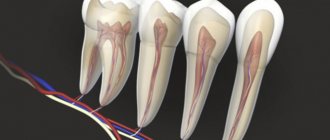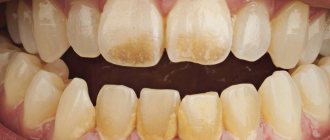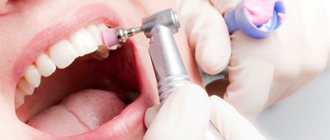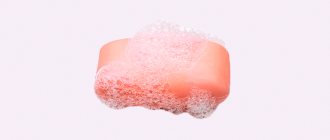In what cases is it necessary to install a filling?
The installation of restorative material is carried out not only in the treatment of carious lesions. The procedure is also performed when:
- presence of chips and cracks;
- elimination of consequences after mechanical damage;
- intense loss of hard tissues, leading to almost complete wear of the upper part of the teeth (for example, due to involuntary grinding of the jaws).
It is worth noting that any dental clinic performs filling only in cases where the destruction of the coronal part is insignificant. If the surface of the tooth is damaged by more than a third, it is replaced with an artificial substitute - a prosthesis.
The use of modern materials helps restore the beauty of the smile and chewing function, and also prevents further destruction of the mineralized coating.
Is it possible to install a temporary filling yourself?
The installation of fillings should only be entrusted to a doctor. The fact is that, for all its rigidity, the tooth is very easily susceptible to infection. If you close a cavity in a tooth without proper preparation, there is a high probability of infection and the development of serious complications. The simplest thing is inflammation of the pulp, or pulpitis. In serious cases, the patient may lose a tooth and even harm neighboring ones if the inflammation spreads.
The desire to fill a tooth with temporary material may arise if a permanent or temporary filling falls out or a piece of the crown part of the tooth breaks off. In these cases, you need to make an appointment with a doctor as soon as possible, and while waiting for the visit, avoid getting food into the resulting cavity and follow simple rules.
What types of fillings are there?
Depending on the period of use, temporary and permanent fillings are distinguished. The first ones are placed during treatment. For example, they cover a tooth for a while in order to understand whether the nerve is affected by caries or not. A temporary filling is also used to secure medications placed in a diseased tooth, or to secure arsenic after depulpation. After two weeks, temporary materials are replaced with permanent ones. The latter can last for years.
In modern dentistry, the following types of fillings are distinguished:
- Cement fillings are a budget option. They are difficult to grind, look unnatural and can cause destruction of the teeth they interact with.
- Metal (almagamic). They are made from an alloy of silver and copper, are characterized by increased strength, but also stand out against the background of the rest of the jaw. Often, fillings of this type are installed on teeth located further than the incisors.
- Composite fillings. They have a paste-like consistency and are applied in layers, so working with them does not cause much difficulty. Special ultraviolet light is used to fix composite materials. The variety of the palette allows you to choose a shade that will not differ from the native enamel, which is why composites are widely used for the restoration of anterior teeth.
- Ceramic fillings. In appearance and composition, they are as close as possible to the natural coating of teeth. Their production takes some time, so the fixation of the material is carried out in several stages. Ceramics are resistant to temperature changes. Its main advantage is also aesthetics.
When and why do you fill a tooth at home?
Most people avoid going to the dentist. Some even dare to install a filling on their own. It is accessible and safe if you know what material is best to use and how to carry out the procedure correctly.
Independent attempts to install fillings on teeth can be caused by many reasons:
- Sometimes it is not possible to get to the dentist when the patient lives in a remote area or is on a long-term trip or trip.
- Some practical citizens consider paying a significant sum to the dentist a waste of money. This has a negative impact on the family budget.
- There are long queues in public clinics, and the level of treatment is not always of high quality.
- Another reason is panic fear of the dental office and the sound of the drill.
All these factors lead to the search for ways to fill a tooth yourself without unnecessary problems. A special powder for filling is purchased at the pharmacy. Its instructions are carefully studied and you can begin the procedure.
Kopylova Lyubov
implant surgeon, dentist-therapist
Important! Whatever the reason for wanting to install a filling yourself, for safe treatment it is recommended to have at least minimal skills in this area and basic knowledge from the field of medicine.
What types of fillings are better?
Many dentists recommend installing fillings made of light-curing composite. They are characterized by increased strength and durability, and look natural. Composite fillings are suitable for filling cavities in distant teeth and restoring carious cavities, as well as for treating erosions of hard tissues. Their service life is 5 years.
Glass ionomer cement, which is a hybrid of acrylic and silicate components, is also considered a good choice for filling. Glass ionomer combines well with natural coatings and other established types of fillings; it is suitable for treating destructive processes of the tooth, filling the anatomical space under the roots, and preparing the cavity for further orthopedic manipulations.
Manufacturing materials
When choosing a composition for temporary closure of a carious cavity, the following are taken into account:
- size of the lesion;
- diagnosis;
- expected duration of treatment;
- the patient is allergic to medications.
Most often, doctors use the following intermediate-acting filling solutions:
- From kaolin and zinc sulfate. The mixture allows you to partially restore dentin - the hard crown part located under the enamel.
- Polycarboxylate. Low-toxic cement used to fix a crown, inlay or dental bridge. Can act as an insulating gasket when installing amalgam and cement elements.
- Karyosan. Zinc oxyeugenol cement, formed by zinc oxide and eugenol. Shows analgesic and antiseptic properties. Used to disinfect canals and relieve inflammation.
- Vinoxol. Includes zinc oxide and a solution of polystyrene in guaiacol. High-quality artificial dentin that can withstand chewing load for one to two months.
- Glass ionomer cement. Suitable if you need to fix dentures for a short period of time.
How is the filling installed?
The fixing of the restoration material always follows the same pattern:
- First, the doctor injects into the tissues located around the damaged area.
- When the medicine begins to act, the specialist cleans the cavity from the remains of dead tissue, darkened mineralized parts and dentin, and gives it the desired shape and depth.
- The doctor then examines the pulp. If the connective tissue is not damaged, the prepared area is treated with an antiseptic. If the pulp is in a state of inflammation, then the dentist removes it from the tooth cavity and then fills the canals.
- After the above manipulations, the cavity is dried. Then special antimicrobial and insulating gaskets are placed in it.
- At the final stage, filling is carried out. At the end of the operation, the installed material is ground for comfortable closure of the jaws and polished.
Why use it - indications for use
Dentists install temporary filling compounds for:
- Advanced caries. If the cavity is very deep, after it has been cleansed of the affected tissue, a medicinal solution is applied to make the layer between the open area of the crown and the dentin as strong as possible.
- Progressive acute pulpitis. Requires depulpation. For this purpose, a medicine is placed into the “hole” that destroys the nerve. It is covered with a protective insulating compound, which will be replaced in the future.
- Periodontitis. With this disease, progressive inflammation in the root area is observed. To stop it, the dentist puts an antiseptic medicine inside the canals. To securely fix it, a hardening gel is placed on top.
- Complicated carious process. Sometimes dentists are faced with a non-standard course of a diagnosed disease. Then, in order to select an effective treatment, they decide to observe the dynamics. In this case, there is no point in installing a permanent element - it will most likely have to be removed soon. Therefore, preference is given to the temporary.
- Manufacturing of dental crowns and bridges. After impressions are taken, it is important to protect the sawn parts of the unit. To do this, use a temporary filling or crown.
Sometimes non-permanent filling is used during the sanitation of dental canals. This is necessary to prevent recurrence of the treated disease. The specialist thoroughly cleans all intradental areas, then applies an antiseptic and closes it on top for a certain period of time. During repeated appointments, he uses permanent hardening mixtures.
After teeth filling
In some cases, after applying a filling, the sensitivity of the sealed tooth to external factors may increase: it may “ache” unpleasantly with any temperature change or when air enters. This most often happens when using composite materials. If the tooth remains sensitive two weeks after treatment, you should immediately consult a doctor.
A common cause of pain that occurs immediately after the anesthetic wears off can also be an excessive filling height. In this case, it should be reduced by the dentist.
The application of a filling is always accompanied by final grinding, during which the edges may remain sharp. Due to the action of the injection, this is often not felt immediately. If you notice protruding edges after the anesthetic has worn off, you should contact a dental clinic as soon as possible and make an appointment to straighten the tooth surface.
What to do if there is a hole in your tooth?
Some manipulations will help you wait for a visit to the doctor without complications:
- First of all, it is important to prevent the accumulation of food debris and plaque inside the tooth. The danger is that bacteria developing in dental plaque release acids that are destructive to teeth.
- If your tooth hurts, you can take a painkiller.
- It would be a good idea to rinse with a warm soda solution.
- It is better to limit chewing on the painful side so as not to provoke an attack of pain.
- There is no need to cover the cavity with cotton wool, plasticine and other improvised means. This can cause complications and the development of infection.
Rules for caring for fillings
Despite the fact that many fillings can theoretically last for years, it is recommended to change the materials every 10-12 years. It is recommended to visit a doctor once every six months for hygiene measures. You should also make an appointment with a doctor if:
- short-term pain in the treated area;
- detection of cracks;
- presence of a chip in the filling material.
The dentist can easily replace a bad filling with a new one.
If there is a large amount of restoration material in the cavity, you can ask the specialist to prescribe a gel with a high fluoride content. Its regular application will help strengthen the hard surface and prevent caries from forming again. Filled teeth may also be coated with fluoride varnish during the examination.
At home, it is recommended to use mouth rinses. With their help, you can significantly reduce the number of microbes that cause caries.
Summarizing the above, I would like to note that filling is a serious procedure. To prevent dental treatment under anesthesia from ending with repeated fillings and a double waste of time and money, you should seek help only from reliable, experienced specialists.
Content:
- Why are temporary fillings placed?
- Why use it - indications for use
- How long can you walk with such protection?
- Manufacturing materials
- How does the installation work?
- Rules of care
- If the coating collapses prematurely
- How does the replacement work?
Often, patients at dental clinics are faced with a situation where the doctor gives them a cheap intermediate filling and indicates the day when they need to come back for a follow-up appointment to replace it with a permanent one. We suggest you understand this treatment tactics and its features.
It is also important to remember:
You should not ask the dentist to “cut down” the filling too much in advance to avoid possible overestimation. The upper and lower teeth must be in contact with each other to ensure proper chewing of food. In addition, the removal of teeth from the bite (a special reduction in their height) can lead to a decrease in the distance between the upper and lower jaws. This will inevitably lead to the same diseases of the temporomandibular joint. Therefore, the height of the fillings should be optimal, comfortable for the patient, and at the same time, not reducing the height of the bite.
Remember!
If after installing the filling (coming home, the next day or some time later) you notice that the filling is bothering you and you feel uncomfortable closing your mouth, then if possible, contact your dentist. He will once again check the contact points of the teeth using a carbon copy, find out your subjective sensations (where, in your opinion, it is interfering) and adjust the filling. It will take literally 5-10 minutes and will save you from further problems.
In addition, if you feel that the edge of the filling is sharp and injures the surrounding tissues (tongue, cheek, gum), that the filling is not polished enough, that there is a gap, gap, step, etc. between the filling and the tooth. – also consult a doctor for correction. If there are undercuts, gaps and roughness, there is a risk that plaque and microbes will accumulate under the filling or on it, and a relapse of caries may develop in this place over time. The dentist will quickly and painlessly polish the problem area and thereby prevent possible consequences.
Preparation for filling
During the preliminary consultation, the dentist conducts a full examination of the dentition, during which he identifies the main areas of damage. In advanced cases, he may prescribe an x-ray of a separate area or an orthopantomogram to obtain a general picture of the condition of the dental canals.
Further preparation for filling comes down to hygienic procedures. If the damage prevents you from brushing your teeth normally using a toothbrush, it is recommended to rinse your mouth using bactericidal rinses. This will simplify the process of disinfecting the oral cavity in preparation for filling.
Sedation
“Calm, just calm!” This is the motto of anyone who crosses the threshold of a dental office. To do this, you can take a mild sedative (valerian, motherwort) or drugs with similar effects in advance (preferably after prior consultation with your doctor).
Anesthesia
It is mandatory if the teeth are damaged deeper than the enamel level. To do this, they mainly use injectable local anesthetics, which are injected into the area where the problem tooth is located. The start time for a standard injection drug is 15-20 minutes from the moment of administration.
If the damage extends only to the enamel, the treatment procedure does not require drug anesthesia of the nerve endings of the tooth, however, for people with hypersensitivity, as a rule, an exception is made.
In severe cases and with severe psychological instability, the patient may choose general anesthesia.
Recommendations
The Doctor Martin Clinic provides services for the treatment of patients with the installation of a temporary filling, if this stage is necessary for more effective treatment. Our center provides guarantees for the work of specialists and materials, however, the possibility of temporary fillings falling out cannot be ruled out.
To reduce the risk of opening a tooth cavity when a filling falls out, our experts recommend:
- use low-hardness brushes for dental care;
- reduce the load on the affected tooth;
- exclude the influence of sudden temperature changes (including eating dishes of different temperatures);
- Do not touch the fillings with your tongue or any objects.
Installation of a temporary filling is a mandatory intermediate step in the treatment of many dental diseases.
Compliance with all recommendations, the professionalism of the doctor and high-quality materials reduce the likelihood of temporary fillings falling out to a minimum. If the filling does fall out, we recommend contacting our specialists for advice and making an appointment as soon as possible.
Main causes and degrees of mobility
Before considering how to save a loose tooth, it is important to identify the main factor that caused it. Possible reasons include:
- mechanical damage (trauma). As a result of various bruises, damage to the periodontal tissues and root displacement occur. It is worth noting that if the tooth remains in the socket, it is enough to carry out strengthening procedures to save it;
- genetic predisposition. For patients with poor heredity at any age, it is important to take preventive measures to strengthen teeth in order to avoid problems in the future;
- periodontal diseases (for example, gingivitis, periodontal disease). They make the roots weak, causing bleeding and swelling. In the absence of timely treatment, the gums will become loose, which will lead to mobility and loss of teeth;
- bruxism (“teeth grinding”). Very often, bruxism bothers you at night. In such situations, it is recommended to wear special protective equipment during sleep;
- abuse of alcohol and tobacco products. They weaken the body’s protective properties and have a destructive effect on bone tissue, which can lead to instability;
- poor nutrition. People who abuse junk food, neglecting foods with healthy vitamins, minerals and trace elements, often complain of dental problems. In such situations, it is important to start eating a balanced diet and drinking a vitamin complex;
- systemic diseases (osteoporosis, thyroid dysfunction and other abnormalities of the endocrine system). They have a negative impact on the condition of the entire body;
- age. Over the years, due to deterioration of blood supply, bone tissue atrophy gradually occurs, which leads to loose teeth;
- low immunity (for example, due to recent chemotherapy). Since the body lacks the strength to resist, the most vulnerable parts suffer first, the oral cavity being one of them;
- pregnancy and lactation period. The body experiences an acute shortage of microelements and vitamins, and hormonal surges occur. This all affects the condition of the oral cavity;
- uncontrolled use of certain medications.
In this case, four degrees of mobility are distinguished. In the first, the teeth deviate slightly to the side (less than 1 mm). On the second, the amplitude increases (by more than 1 mm). On the third, they deviate in all directions. On the fourth, they are able to rotate around their axis. The answer to the main question: “if a molar tooth is very loose, can it be saved?” positive. But this requires long-term complex treatment.










